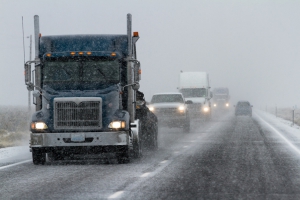 There is no such thing as a good day for truck equipment to break or fall apart, but some are definitely worse than others are. Truck drivers don’t want to be caught out in frigid temperatures and harsh, wintry conditions dealing with shoddy windshield wipers or a busted defroster—especially when they can take steps to prevent it from happening.
There is no such thing as a good day for truck equipment to break or fall apart, but some are definitely worse than others are. Truck drivers don’t want to be caught out in frigid temperatures and harsh, wintry conditions dealing with shoddy windshield wipers or a busted defroster—especially when they can take steps to prevent it from happening.
Truck drivers should take heed of the following tips to help stay safe and warm while dealing with extreme cold and winter weather:
- Perform a thorough pre-trip inspection. While the Federal Motor Carrier Safety Administration (FMCSA) doesn’t explicitly state that truck drivers have to perform a pre-trip inspection, they do require drivers to believe their truck is safe to operate. This is only possible by inspecting the truck thoroughly.
- Inspect and replace wiper blades if necessary. Drivers should consider investing in heavy-duty winter blades to better handle ice and snow.
- Test the defroster and heater. When temperatures drop to below freezing, it’s a bad time to discover the heater is struggling. Drivers should make sure these vital components are in good working order before hitting the road.
- Take steps to increase traction. Making sure to inflate tires to the correct pressure can help as can keeping the gas tank full. The added weight presses down on the drive tires.
- Prevent diesel gelling. When temperatures drop below 30 degrees, truck drivers should use a fuel supplement. If the truck won’t start in cold weather, the problem may be gelled fuel. Fuel supplement can help release it.
- Focus on visibility. This means clearing all windows, mirrors, and the windshield of frost, snow, or ice before departing. If wintry conditions begin while on the road, truck drivers should stop whenever they can to clear off brake lights, tail lights, and headlights to ensure other drivers can see them.
At DriverCheck, we care about your drivers’ safety. Our innovative online training and vehicle-monitoring programs help fleets identify and rectify unsafe driver behaviors. To learn more about how we can help improve your fleet’s safety, contact us today.